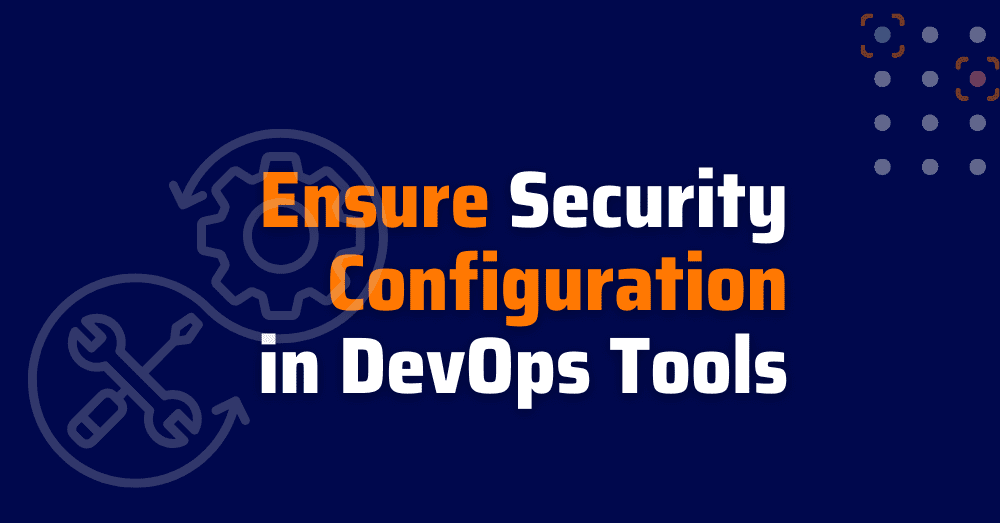In the fast-moving world of DevOps tools, speed and efficiency are critical. However, without properly securing DevOps security tools, the entire development process can face serious risks. By focusing on DevOps and security, teams ensure their tools and workflows remain reliable and protected. Additionally, as organizations adopt advanced DevSecOps security tools, configuring and monitoring these tools becomes even more essential. These tools not only form the backbone of Continuous Integration (CI) and Continuous Delivery (CD) but also safeguard the development pipeline from vulnerabilities.
Branch Protection in DevOps and Security: Securing the Codebase
One of the most effective ways to strengthen DevOps and security is by implementing branch protection. This feature safeguards critical branches against unauthorized or malicious changes. For instance, enforcing branch protection prevents attackers from injecting vulnerabilities into your codebase. To elevate this protection:
- Enforce Code Reviews: Require rigorous reviews for every change to catch vulnerabilities and maintain coding standards.
- Prevent Force Pushes: Block force pushes to preserve commit history and keep a clear, traceable record of changes.
- Add Automated Security Checks: Integrate security scans into pull requests to identify risks before merging.
The Role of DevOps Security Tools in CI Tool Extensibility
The flexibility of DevOps security tools, such as Jenkins and GitLab, lies in their extensibility through plugins. However, this extensibility can also expose systems to risks if plugins are outdated or poorly maintained. For example, a plugin with unresolved vulnerabilities might allow attackers to access your pipeline or inject malicious code.
Risks of Unchecked Plugins:
- Outdated Tools: Plugins without timely updates may miss critical security patches.
- Weak Security Assessments: Some plugins lack proper security reviews before integration.
- Incompatibility Issues: Plugins that don’t align with the core system can cause vulnerabilities.
- Patch Delays: Delays in applying patches leave gaps that attackers may exploit.
Best Practices for Securing DevSecOps Security Tools
Effectively managing DevSecOps security tools requires a proactive approach. While integrating these tools into your CI/CD pipeline, follow these practices to build a secure foundation:
- Choose Trusted Plugins: Use actively maintained plugins with strong reputations in the community.
- Conduct Regular Audits: Frequently review your tools for vulnerabilities and apply updates promptly.
- Integrate Security Scans: Add automated vulnerability detection to monitor your tools continuously.
Proactive Risk Mitigation
The flexibility of DevSecOps security tools is both a strength and a potential vulnerability. Therefore, it is essential to take proactive steps to manage risks effectively. Here’s how you can do so:
- Conduct Regular Code Reviews: To begin with, make secure coding a priority by integrating reviews at every development stage. In addition, ensure that developers follow best practices to minimize vulnerabilities.
- Implement Automated Scanning: Furthermore, leverage security scans throughout the software lifecycle. This allows you to catch and address issues early, reducing the chance of critical vulnerabilities making it into production.
- Strengthen Branch Protection: Additionally, enforce settings that prevent unauthorized changes to your codebase. This not only protects critical branches but also ensures accountability and transparency in the development process.
- Stay Updated: Lastly, continuously update tools and plugins to avoid exploitation through known vulnerabilities. Regular updates ensure that your tools are equipped with the latest security patches and enhancements.
By following these steps, you can create a more secure and resilient DevOps environment. Moreover, implementing these measures helps reduce risks while maintaining the flexibility and efficiency that DevOps teams value.
Building a Collaborative DevOps and Security Community
Improving DevOps and security requires continuous learning and collaboration. For this reason, sharing knowledge and experiences becomes invaluable. Here are some ways to contribute and grow:
- Reflect on Current Practices: Are your branch protection settings sufficient? Are your DevSecOps security tools updated regularly? Address these questions to identify opportunities for improvement.
- Share Your Experiences: Share your challenges and strategies with peers to contribute to the collective knowledge of the DevOps community.
- Engage with Others: Join forums and online discussions to exchange insights and learn from other practitioners.
Discover community-driven discussions and resources at DevOps Chat.
Securing DevOps Security Tools Is an Ongoing Journey
Securing DevOps security tools and workflows is not a one-time effort; it’s a continuous process. By implementing the practices outlined here, teams can safeguard their pipelines while maintaining efficiency. Moreover, engaging with the DevOps community allows everyone to share insights and raise security standards together.
Let’s work collaboratively to ensure the future of DevOps and security is fast, secure, and resilient. Thank you for joining this journey. May your DevOps environment remain strong and secure!
